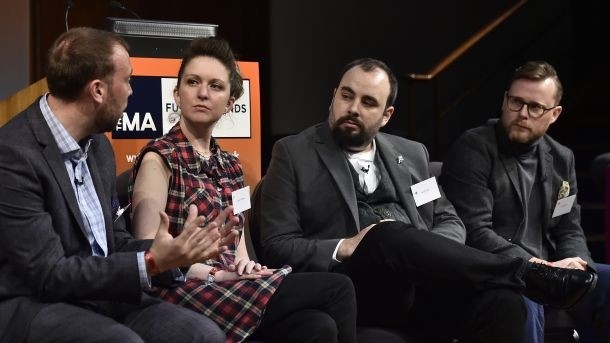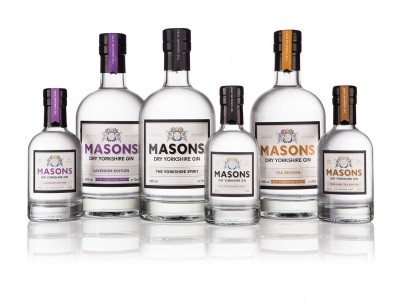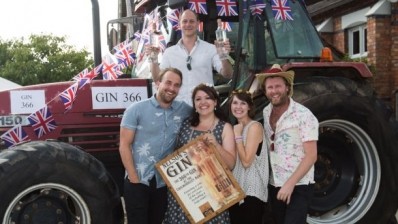FUTURE TRENDS: SPIRITS
Spirits summit: bursting the gin bubble?

Four gin experts sat down at The Morning Advertiser's Future Trends: Spirits event this week (3 October) to discuss the state of play in the category and whether gin’s remarkable growth can continue into the latter half of the decade.
How has the way that gin is being drunk and sold changed?
The panel
- Sarah Mitchell, mixologist
- Graeme Loudon, commercial director, CGA Strategy
- David Smith, gin expert
- Joel Harrison, drinks writer
Sarah Mitchell, mixologist: It has evolved as a category. I used to run a bar called Graphic where we were one of the very first gin bars to exist. It was seven or eight years ago. I started off with 40 gins and ended with 236 by the time we left. We had 11 tonics and perfect serves for each. Now that has spread across the country and across a lot of menus, and it's really interesting to see it's gone from hotel chic and adapted to the pub. JD Wetherspoon now has a perfect serve gin and tonic menu. Do the consumers understand? I think there’s still a bridge to gap in terms of how that serve happens.
Graeme Loudon, commercial director, CGA Strategy: What we have now is a very promiscuous gin consumer. The number of distilleries has more than doubled. There’s so much more choice out there. Flavour gins are coming through to the market. Sometimes these brand owners have to put flavour into a gin because there’s just so many London dry gins out there now. Gin outside of whiskey has the most brands on the bar represented. There’s a plethora of choice so how do you, as a brand, stand out in that? I think it comes down to a signature serve – calling out botanicals and pairing it with the correct garnish and sharing vessel. You want an experience when you order that gin and tonic.
How do you go about working out a perfect serve?
SM: You need to gather all that knowledge with the right mixer. Get it down and find that vessel, whether it’s a big Spanish serve or a little tumbler, it’s that little bit of training.
Joel Harrison, drinks writer: In London, there’s something to be said for being a ‘completist’ gin bar and having lots of options. But if you have a venue – in Yorkshire for instance – there’s nothing wrong with having a very targeted local gin list and rotating it like you would a list of ales. Get the suppliers in and use them as a way to help sell the gin. People want to come and meet the man or woman behind the spirit so there is a great opportunity to use that as a launch pad to make your bar an experience.
SM: People want to be engaged. Our consumers want to know more.
JH: I would say to those running a venue: don’t just invite the producers down, see if you can go and visit them. You can even go and throw the botanicals into the still. So when that run comes off, you have some ownership over the product and you can sell that to your customers.
GL: You’re not going to have 230 gins in a local pub but you can have a range of seven or eight and tonics with different flavour profiles, and you can take the consumer on a journey and give your outlet that point of difference which drives footfall.
Could the boom be approaching its end?
David Smith, gin specialist: Authenticity and quality is somewhat of a guard against that. Even back in 2011, people were saying there were too many gins around.
SM: If you look back into the early 2000s and you see all the flavours coming out, you see the brand leaders now are still on the back bar. Now what we’ve got is a market that has more love for local products, the Yorkshires, the Devons, so the craft – dare I say it – will still have its place but you will see a lot falling by the wayside.
JH: I would say wait about two years and buy your still second hand if you are thinking of starting a gin distillery. If you’re going to do something, fail fast or fail cheap. But I still think there’s opportunity for brands to grow. I still like this idea that for every Liverpool gin, there’s a Liverpool fan who doesn’t want to drink it. There’s a lot of growth in gin. I still think there’s an opportunity.
GL: Traditionally, it’s been the real premium niche brands that have been driving growth but we’ve seen some mainstream ones returning to growth. With so many new brands coming into the market I feel it’s continuing to grow but just at a slower rate.
Sponsors of the Future Trends: Spirits event included headline partners Diageo and Schweppes; associate partners Pernod Ricard UK and the Wine and Spirit Education Trust; and bar partners Warner Edwards, Masons Yorkshire Gin, Slingsby Artisan Gin, the City of London Distillery and Willis Publicity.






